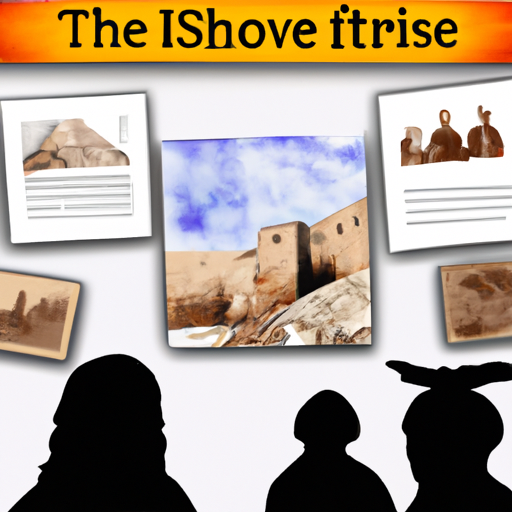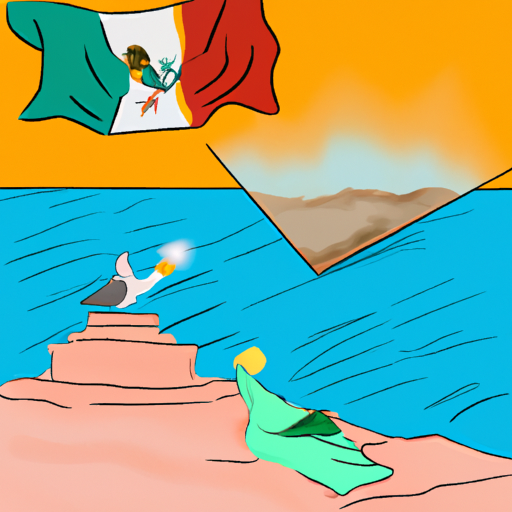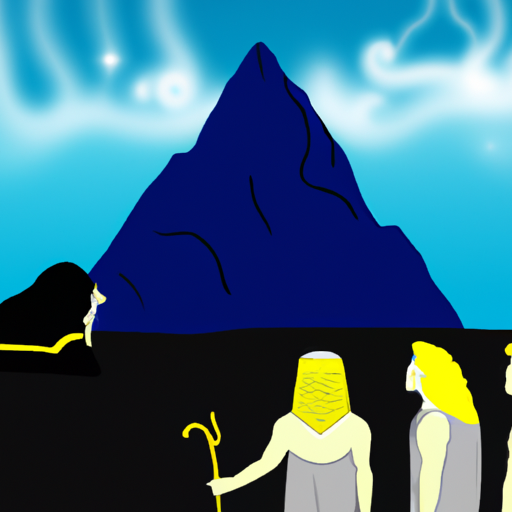The History of Viking Combat: Exploring Why Vikings Were So Good at Fighting
Unearth the secret of why the Vikings were so renowned for their prowess in battle, and uncover their mythic combat strategies! Unveil the mysteries of how they achieved such success in warfare, and explore the ancient tales of their legendary tactics! Delve into the past and learn why these fierce warriors were renowned for their prowess in battle!

Mysteriously, the Vikings have long been renowned for their battle prowess. For centuries, scholars have sought to uncover the secrets of their legendary tactics. Now, we can finally delve into the ancient tales that tell of their mythic strategies!
From their use of advanced formations to their reliance on superior weaponry, the Vikings’ techniques were anything but ordinary. They employed a variety of methods to gain an advantage over foes – from surprise attacks to psychological warfare. Their capacity to adjust rapidly and proficiently made them a powerful presence on the battlefield.
The Vikings also held a strong sense of honor and duty, which was mirrored in their code of conduct during combat. They believed that victory could only be attained through courage and skill rather than deception or cunningness. This commitment to honor drove them to fight with unyielding dedication and fidelity – qualities that instilled fear and admiration among those who encountered them in battle.
So why were the Vikings so successful in war? By combining superior strategy with courage and honor, they became one of the most feared forces in history – a legacy that still reverberates today!
.
Introduction

Mighty, fierce and courageous in the face of danger, the Vikings were a powerful force to be reckoned with. Their legendary might was due to a combination of cultural norms, preparation and armaments. Young men were expected to demonstrate their strength from an early age as part of their culture, which also included exhaustive training in the use of swords, spears and axes. When it came to equipment, they had a clear advantage over their adversaries with superior armour and naval technology. Such a formidable combination made them a force that could not be ignored.
– Exploring the Historical Reasons for Viking Superiority in Combat
The Vikings, renowned for their combat prowess during the Middle Ages, were a force to be reckoned with. To understand why they were so successful in battle, it is necessary to look at the various factors that contributed to their superiority.
Their use of advanced weaponry and armor was an important factor in their success. Viking warriors typically employed swords, spears, axes, and bows and arrows as their primary weapons while wearing chainmail or leather armor for protection. This combination gave them an advantage over other cultures of the time.
In addition to their armaments, the Vikings also had a unique approach to warfare. Instead of relying solely on brute force, they employed a variety of tactics such as surprise attacks, feigned retreats, and ambushes which allowed them to gain an upper hand even when outnumbered or outgunned by opposing forces.
Finally, the intense training regimen followed by the Vikings was another crucial factor in their success. Physical conditioning was seen as essential for victory and thus considerable time and effort was devoted to honing martial skills. Through rigorous practice they developed strong reflexes and increased stamina which enabled them to outlast adversaries in prolonged engagements.
To sum up, it is clear that a combination of sophisticated weaponry and armor, effective tactics, and extensive training allowed the Vikings to become one of the most feared fighting forces of the Middle Ages. By delving into these historical factors we can better appreciate why they were able to dominate so many battlefields during this period of history.
– Examining the Role of Training and Tactics in Viking Military History
Exploring the intricacies of Viking military history can be a captivating journey. To comprehend their success in battle, it is imperative to analyze the role of training and tactics. Strenuous physical conditioning was necessary for Viking warriors, as they had to be fit and competent with weapons such as swords, axes, spears, bows, and more. Additionally, employing tactics like hit-and-run maneuvers or feigning retreats were advantageous in confusing adversaries. Furthermore, they would often rely on superior numbers and surprise attacks to gain an upper hand. By integrating these two components—training and tactics—the Vikings became a feared force throughout medieval Europe. Through studying their military history, one can develop an admiration for their skillfulness and resourcefulness.
– Uncovering the Impact of Viking Raids on European History
The tumultuousness of the Viking raids of the 8th to 11th centuries had a lasting, far-reaching effect on European history. Scandinavian raiders traversed the North Sea, pillaging coastal settlements across Europe and leaving an indelible mark on culture, economy, and government.
Culturally speaking, the Vikings brought their own distinct beliefs and traditions to many regions in Europe. These customs were adopted by locals and assimilated into their own cultures. Additionally, Norse mythology was spread throughout Europe as people began to embrace the Norse pantheon of gods.
Economically, Viking raids caused massive upheaval and instability in many areas. Towns and villages were destroyed, leaving people without homes or resources. Trade between regions decreased due to this disruption while some areas were forced to pay tribute to their attackers in order to avoid further destruction. This created a new dynamic where certain regions were beholden to their invaders for protection from other raiders.
Politically speaking, governments had no choice but to invest heavily in fortifications such as walls and castles in order to protect their citizens from these marauders. This led to increased military spending which caused economic strain as well as disputes between countries over territory or resources. Some rulers also employed Viking forces as mercenaries which allowed them to gain control over independent regions or expand their territories through conquest.
All in all, it is clear that the Viking raids had a profound influence on European history that can still be felt today in culture, economics and politics alike. Although it is impossible to know how different Europe would be if these raids had not occurred, it is certain that they left a lasting impact on the continent for centuries afterwards.
– Analyzing the Weapons and Strategies Used by Vikings in Battle
The ferocity of the Viking warriors was renowned throughout the world, and their weapons and strategies played a pivotal role in their success. From the iconic longsword to the mighty Dane axe, these warriors were armed with an impressive array of arms that could easily overwhelm any foe. But it wasn’t just their weapons that enabled them to gain the upper hand – they also had specific tactics that allowed them to outwit their enemies. The shield wall formation, for instance, saw them form a line of overlapping shields that was virtually impenetrable. They also employed boarding tactics, where they would ram into enemy vessels and fight onboard. And then there was psychological warfare – Vikings were well known for using loud noises or screams to unnerve their adversaries.
By delving into the weapons and tactics used by these legendary warriors, we can gain a better understanding of how this ancient culture approached battle. Their combination of powerful weaponry and ingenious strategies enabled them to dominate European battlefields for centuries before eventually fading from history.
– Investigating the Cultural Factors that Contributed to Viking Success in War
The prowess of the Vikings in battle has been a source of fascination for historians, with many endeavoring to uncover the cultural aspects that enabled them to succeed. Religion was a major part of Viking life and it had an effect on their approach to war. Beliefs such as being rewarded in Valhalla after death if they fought bravely promoted courage and determination. Furthermore, it was believed Odin himself would grant victory if they fought hard enough.
The social structure of Viking society also had an influence on warfare. Every able-bodied man was expected to fight when needed and those who didn’t were considered dishonorable. This created an atmosphere where combat was seen as essential for survival and honor. Additionally, their military organization included specialized units such as berserkers and huscarls which were well-trained and equipped, providing them with a significant advantage over their adversaries.
In summary, there are numerous cultural elements that contributed to the success of the Vikings in war. Their religious beliefs provided motivation while their social system ensured a regular supply of warriors ready for battle. Moreover, their specialized military units were highly trained and equipped which gave them an edge in combat situations. By examining these factors we can gain greater insight into why the Vikings succeeded during this period of history.
conclusion

Awe-inspiring and unparalleled, the Vikings’ martial might was a force to be reckoned with. With time-honed tactics of surprise strikes and swift raids, coupled with unwavering loyalty to their leaders, they were an invincible opponent. Their military legacy was one of strength; rewarded for their successes with wealth and power, they grew ever more formidable. Such prowess in battle set them apart from all other civilizations.
.
Some questions with answers
Q1. Why were Vikings so good at fighting?
A1. Vikings were skilled warriors due to their extensive training and experience in battle, as well as the use of specialized weapons and tactics. Their success in warfare was also attributed to their reputation as fierce raiders and their ability to adapt quickly to changing conditions on the battlefield.
Q2. What kind of weapons did they use?
A2. The Vikings used a variety of weapons, including swords, axes, spears, bows and arrows, and even siege engines. They also employed strategies such as feigned retreats and surprise attacks to gain an advantage over their opponents.
Q3. How did they train for battle?
A3. The Vikings trained for battle by honing their skills through practice drills and mock battles. They also developed a strong sense of camaraderie among their warriors which helped them fight more effectively together in combat.
Q4. How did Viking culture influence their approach to warfare?
A4. Viking culture placed great emphasis on honor and glory in battle, which motivated them to fight fiercely against their enemies. They were also known for taking prisoners rather than killing them outright, which allowed them to gain valuable information about their opponents.
Q5. What historical events are associated with Viking warfare?
A5. Viking raids began around 793 AD with the attack on Lindisfarne monastery in England and continued until 1066 AD when the Normans defeated King Harold at the Battle of Hastings. During this period, Vikings raided many parts of Europe including Britain, Ireland, France, Spain and Italy.



